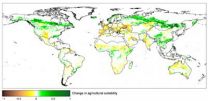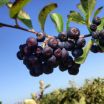(Press-News.org) CHAPEL HILL, N.C. – Individuals living in disadvantaged neighborhoods have worse musculoskeletal pain outcomes over time after stressful events such as motor vehicle collision than individuals from higher socioeconomic status neighborhoods, even after accounting for individual characteristics such as age, sex, income, education, and employment status.
These were the findings of a multi-site research study led by Samuel McLean, MD, MPH, associate professor of anesthesiology and emergency medicine at the University of North Carolina School of Medicine. The results of the study were published online by the journal Pain.
"We all like to believe that we are immune to the circumstances of our environment," said Dr. McLean. "These results suggest that when it comes to chronic musculoskeletal pain development after traumatic/stressful events, the poet John Donne was right – 'No man is an island.' "
The investigators enrolled 948 European-American individuals who presented to emergency care centers in four U.S. states for evaluation after car accidents. Patients were enrolled at the time of their presentation for emergency care, and then received follow-up evaluation at 6 weeks, 6 months, and 12 months. Approximately 90 percent of participants completed follow up at each time point.
Information regarding each study participant's neighborhood environment was determined by geocoding their home address to a "census tract." A census tract is the smallest territorial unit for which population data are available in the U.S. Census tract data was then used to determine neighborhood socioeconomic status using the Socioeconomic Position Index. This index generates a total score by averaging scores of the following measures: percent unemployed, percent below the U.S. poverty line, percent with high school education or less, percent of expensive homes (owner-occupied homes worth $300,000 or more) in the neighborhood, and median household income.
After adjusting for individual-level factors including participant sex, age, highest level of educational attainment, family income, and employment status, living in a more disadvantaged area was found to increase pain burden in the months after the car accident. Results remained significant after adjustment for receiving opioids at the time of emergency care, litigation status, obesity (body mass index), at-risk drinking habits prior to the accident, and mental health status prior to the accident.
There are many ways that living in a poor neighborhood might increase pain across time after a car accident. One potential factor is that living in a disadvantaged neighborhood increases stress and has been shown to affect the function of an individual's stress (i.e., "fight or flight") system. To test this hypothesis, the investigators collected blood samples from participants, and evaluated whether those participants with a common genetic variant which makes one more vulnerable to stress were more affected by the adverse effect on pain of living in a disadvantaged environment. The investigators found that this was the case: those without the genetic variant were relatively unaffected, whereas those with the gene had large and clinically significant differences in pain outcomes depending on their neighborhood environment.
"This finding suggests that the increased stress of living in a disadvantaged neighborhood affects biological systems in the body in ways that increase pain and worsen pain outcomes," said Dr. McLean. "These results also add further evidence that stress systems are involved in the development of chronic pain. This is really important, because we have to understand the biology in order to be able to develop better preventive interventions."
INFORMATION:
First author of the study is Jacob Ulirsch, BS, a former collaborator in Dr. McLean's lab. UNC co-authors include Mark A. Weaver, PhD, research assistant professor in the UNC Gillings School of Global Public Health; and Andrey V. Bortsov, research assistant professor in the UNC Department of Anesthesiology.
This research was supported by a grant R01 AR056328 from the National Institutes of Health.
Living in a disadvantaged neighborhood worsens musculoskeletal pain outcomes after trauma
2014-09-18
ELSE PRESS RELEASES FROM THIS DATE:
Global agriculture: More land, fewer harvests
2014-09-18
According to a simulation of the impact of climate change on agricultural production over the course of the 21st century, carried out by researchers led by Professor Wolfram Mauser at LMU's Department of Geography, some two-thirds of all land potentially suitable for agricultural use is already under cultivation. The study indicates that climate change will expand the supply of cropland in the high latitudes of the Northern hemisphere (Canada, Russia, China) over the next 100 years. However, in the absence of adaptation measures such as increased irrigation, the simulation ...
Withdrawal from the evolutionary race
2014-09-18
This news release is available in German. In ecology, disease tolerance is defined as a host strategy not to fight a pathogen tooth and nail, but rather tolerate it to live (and survive) better in the long term. One key feature of tolerance is that the disease only progresses very slowly – if at all – even if the host carries a high pathogen load.
Roland Regoes, a senior scientist at ETH Zurich's Institute of Theoretical Biology, has now transferred this approach to HIV. He set about investigating whether there are infected people who are more tolerant of the HI virus ...
Decision-support program helps keep seniors out of the emergency room
2014-09-18
New Rochelle, NY, September 18, 2014–An Emergency Room Decision-Support (ERDS) program can significantly reduce ER visits and hospital admissions among older adults on Medicare. This could have important economic implications, helping to reduce the nearly 33% of avoidable ER visits that contribute to about $18 billion in unnecessary healthcare costs each year. Details of a successful ERDS program that had a positive return on investment are published in an article in Population Health Management, a peer-reviewed journal from Mary Ann Liebert, Inc., publishers. The article ...
Language evolution: Quicker on the uptake
2014-09-18
The ability to acquire and creatively manipulate spoken language is unique to humans. "The genetic changes that occurred over the past 6 million years of human evolution to make this possible are largely unknown, but Foxp2 is the best candidate gene we now have," says Wolfgang Enard, Professor of Anthropology and Human Biology at LMU. In his efforts to understand the molecular biological basis of language Enard has now taken an important step forward. The results of his latest study, undertaken in collaboration with scientists at several universities, including the Massachusetts ...
First eyewitness accounts of mystery volcanic eruption
2014-09-18
This eruption occurred just before the 1815 Tambora volcanic eruption which is famous for its impact on climate worldwide, with 1816 given memorable names such as 'Eighteen-Hundred-and-Froze-to-Death', the 'Year of the Beggar' and the 'Year Without a Summer' because of unseasonal frosts, crop failure and famine across Europe and North America. The extraordinary conditions are considered to have inspired literary works such as Byron's 'Darkness' and Mary Shelley's Frankenstein.
However, the global deterioration of the 1810s into the coldest decade in the last 500 years ...
Lunar explorers will walk at higher speeds than thought
2014-09-18
Anyone who has seen the movies of Neil Armstrong's first bounding steps on the moon couldn't fail to be intrigued by his unusual walking style. But, contrary to popular belief, the astronaut's peculiar walk was not the result of low gravity. Wyle Science, Engineering and Technology scientist John De Witt explains that the early space suits were not designed for walking, so the astronauts adapted their movements to the restrictions of the suit. Michael Gernhardt, the head of NASA's Extravehicular Activity Physiology, Systems and Performance Project, wants to learn more about ...
Wild berry extract may strengthen effectiveness of pancreatic cancer drug
2014-09-18
A wild berry native to North America may strengthen the effectiveness of a chemotherapy drug commonly used to treat pancreatic cancer, reveals research published online in the Journal of Clinical Pathology.
The study by researchers at King's College Hospital and the University of Southampton suggests that adding nutraceuticals to chemotherapy cycles may improve the effectiveness of conventional drugs, particularly in hard to treat cancers, such as pancreatic cancer.
The team tested the effectiveness of extract of chokeberry (Aronia melanocarpa) in killing off cancer ...
Violence rates can be halved in just 30 years, say leading experts
2014-09-18
New evidence will be presented at the first Global Violence Reduction Conference in Cambridge this week which shows that homicide rates have been declining since the mid-1990s in many parts of the world - in some cases dramatically.
Nations as diverse as Estonia, Hong Kong, South Africa, Poland, and Russia have seen average recorded homicide rates drop by 40% or more in the course of just 15 years. Out of 88 countries where trend data could be found, 67 showed a decline and only 20 showed an increase between 1995 and 2010, a new analysis of data from the United Nations ...
The Lancet Haematology: PET-CT predicts lymphoma survival better than conventional imaging
2014-09-18
Positron emission tomography/computed tomography (PET-CT) is more accurate than conventional CT scanning in measuring response to treatment and predicting survival in patients with follicular lymphoma, and should be used routinely in clinical practice, according to new research published in The Lancet Haematology.
"Our findings have important implications for patients with follicular lymphoma, a common and usually slow-growing lymphoma. Compared to conventional CT scanning, PET-CT is more accurate in mapping-out the lymphoma, and better identifies the majority of patients ...
Peacock's train is not such a drag
2014-09-18
The magnificent plumage of the peacock may not be quite the sacrifice to love that it appears to be, University of Leeds researchers have discovered.
Dr Graham Askew, from the University's School of Biomedical Sciences, filmed five Indian peacocks taking off using two high-speed video cameras to try to work out what price male birds pay for carrying the spectacular iridescent feathers they use in displays to attract females.
"These feathers weigh about 300g and can exceed 1.5m, so it's expected that the male birds would be making a significant sacrifice in their flight ...



